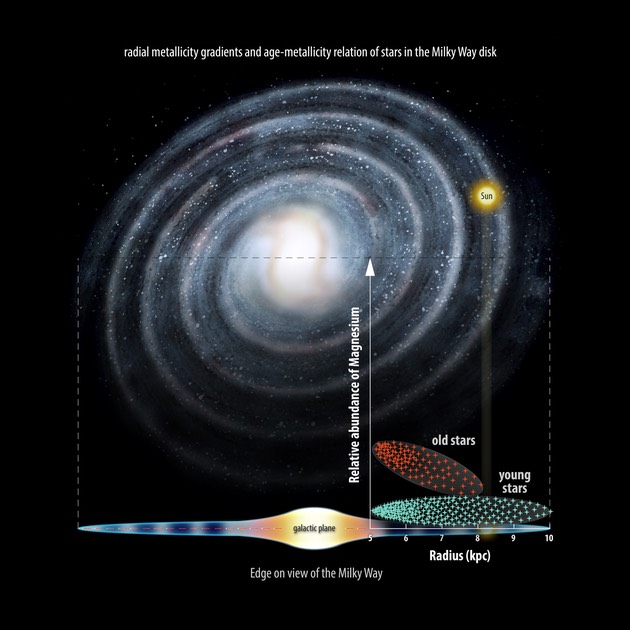We are interested in different aspects of observational galactic chemo-dynamics, including chemical and dynamical properties of star clusters, abundance gradients in the Milky Way and its satellities, and the structure of the Milky Way disk and bulge.

Our recent study of the structure of the Milky Way galaxy (Nature, 555, 2018), provided new constraints on the non-equilibrium evolution of the Galactic disk. We showed that some of the stellar structures in the halo originate from the Milky Way’s disk. These stars were likely kicked out from the disk by an invading satellite galaxy some billion years ago. Our findings were broadly covered in the media and were confirmed in numerous studies by other research groups.
In the analysis of the data from the Gaia-ESO survey (A&A, 565, 2014), we studied the age-metallicity relation of stars in the Milky Way disk. We found no apparent age-metallicity relation for younger stars, and the paucity of metal-rich old stars. We also showed that the inner disk is not only more α-rich compared to the outer disk, but also older, as traced independently by the ages and Mg abundances of stars, suggesting the Milky Way was formed inside-out. This work was featured in the University of Cambridge press release.
More of our findings can be found in the recent papers:
Two chemically similar stellar overdensities on opposite sides of the plane of the Galactic disk
Bergemann et al. Nature, 555, 7696
The Gaia-ESO Survey: matching chemodynamical simulations to observations of the Milky Way
Thompson, Few, Bergemann et al. MNRAS, 473, 2018
The Gaia-ESO Survey: Churning through the Milky Way
Hayden et al. incl. Bergemann, A&A, 609, A79, 2018
Non-local Thermodynamic Equilibrium Stellar Spectroscopy with 1D and >3D< Models. II. Chemical Properties of the Galactic Metal-poor Disk and the Halo
Bergemann et al. incl. Hansen, ApJ, 847, 16, 2017
First metallicity determination from near-infrared spectra for five obscured Cepheids discovered in the inner disc
Inno et al. incl. Bergemann, MNRAS, 482, 1 2018